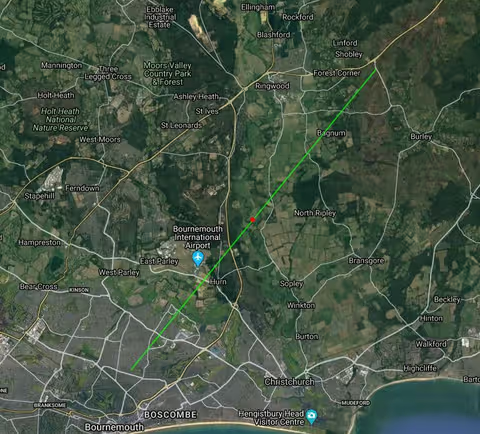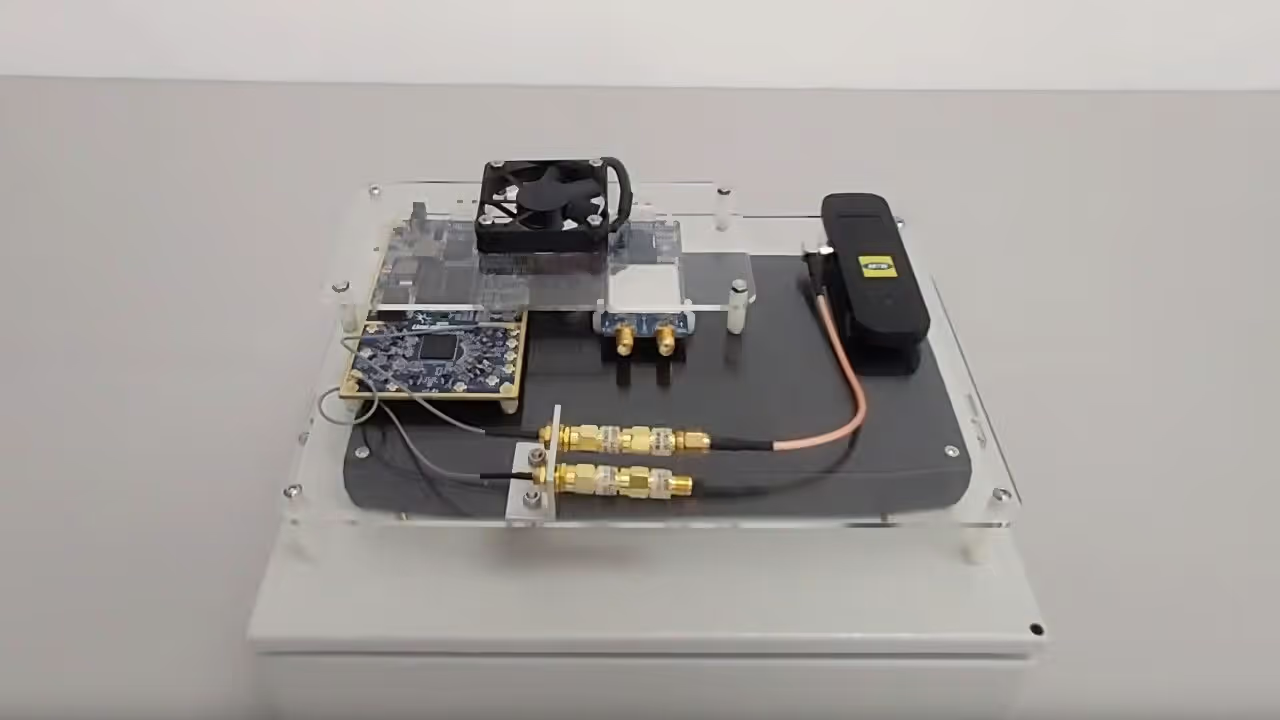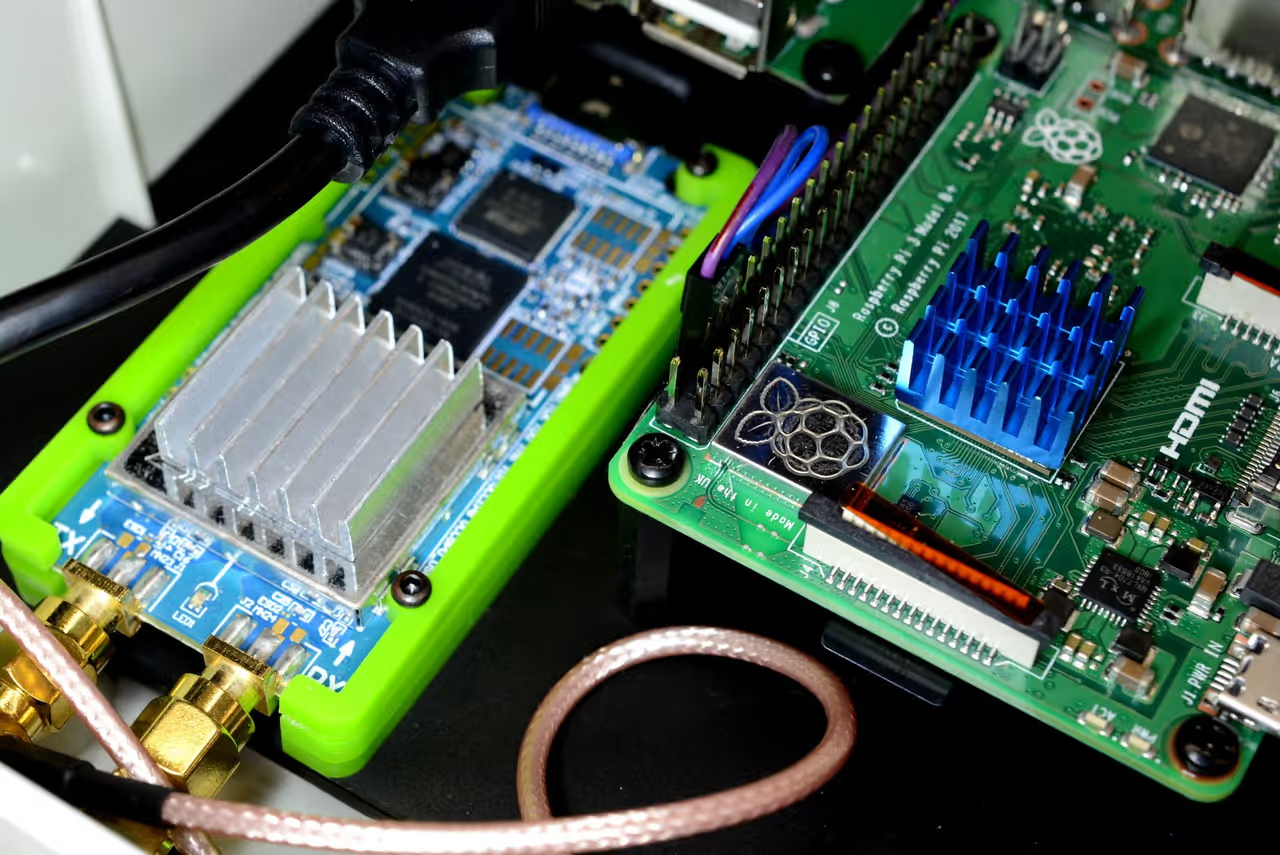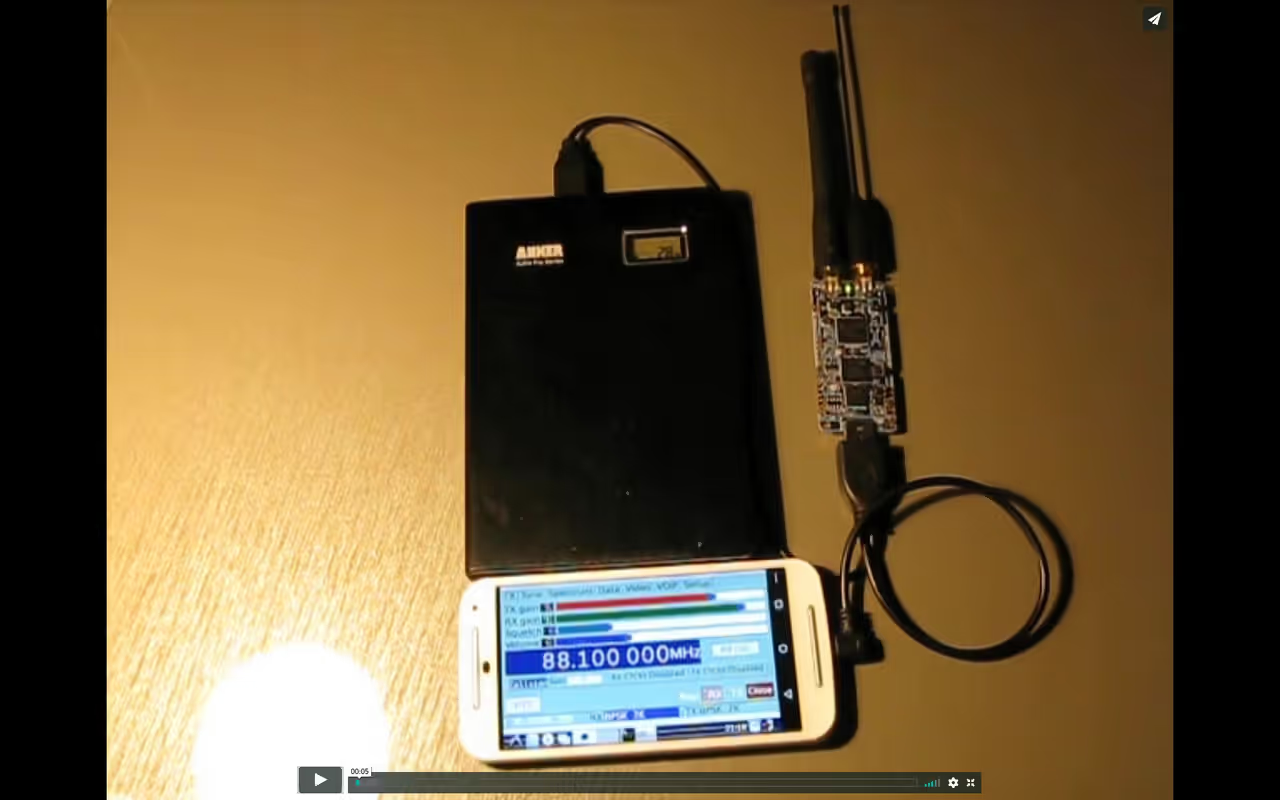LimeSDR Mini 2.0
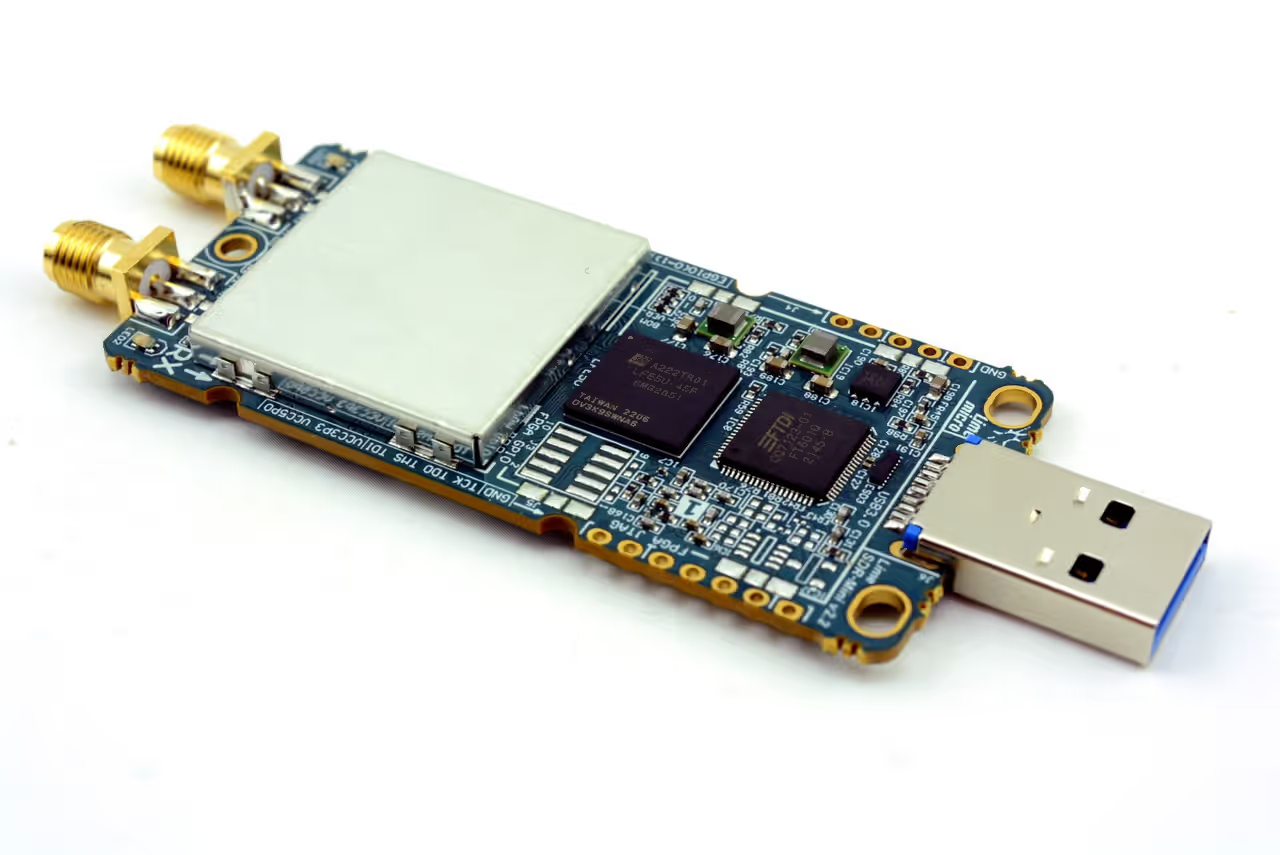
LimeSDR Mini 2.0
LimeSDR Mini 2.0 is an upgraded, drop-in replacement for LimeSDR Mini, a hardware platform for high-performance and logic-intensive digital and RF designs that use an FPGA coupled with Lime Microsystems’ LMS7002M RF transceiver. It has the same form factor as the original LimeSDR Mini and the same RF transceiver, but a new FPGA — the Lattice ECP5 — which has more resources and benefits from an extensive set of open source tools and a vibrant community of developers.
Since we first introduced LimeSDR over eight years ago, and LimeSDR Mini about a year later, we’ve shipped tens of thousands of units to engineers around the world for use in everything from satellite ground stations to digital television.
Whether you’re a hobbyist using the LimeSDR platform to learn about software-defined radio, or a company integrating hundreds of units into your commercial product, we’ve been thrilled at the breadth and depth of LimeSDR Mini applications that you've come up with.
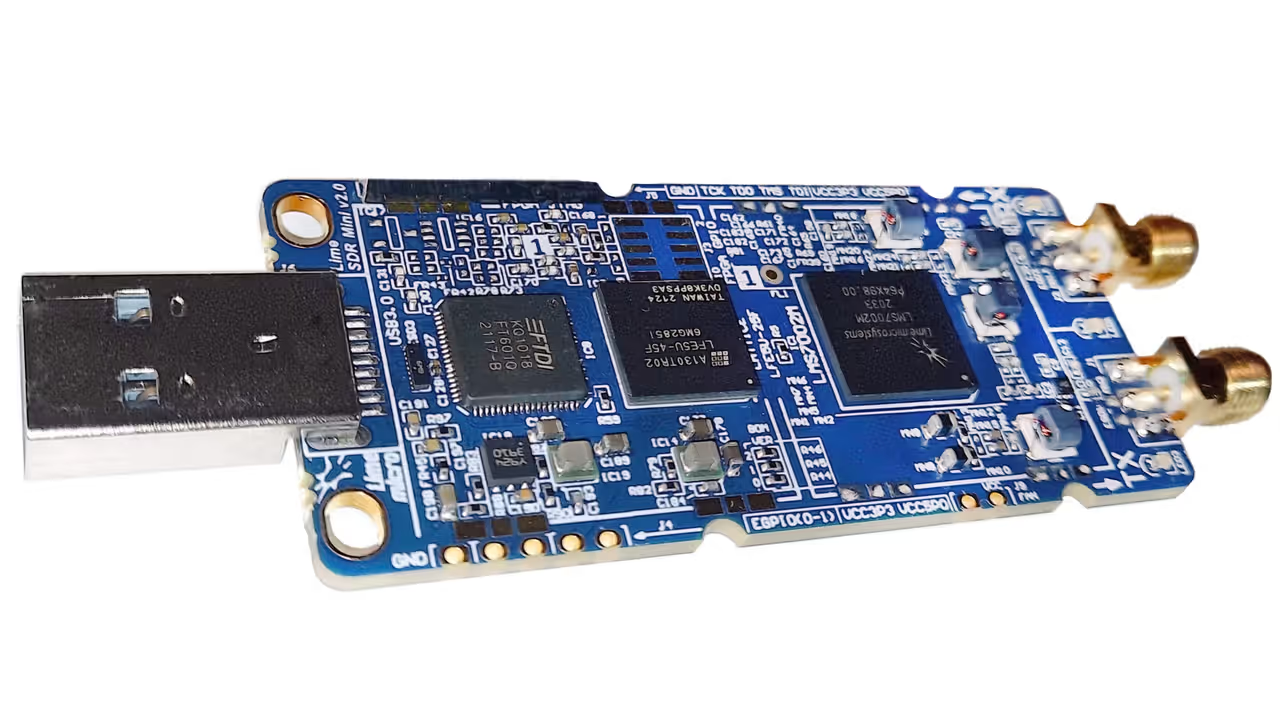

An open, full-duplex, USB stick software-defined radio
It can be used in conjunction with host computers of varying speed, power dissipation and cost, to fit any air interface, whether narrowband or broadband. The board is designed for the following key features:
- Frequency and Bandwidth: The heart of the board is the Lime transceiver RFIC (LMS7002), covering frequencies up to 3.8 GHz with a bandwidth of up to 40 MHz.
- Baseband Interface: A significant level of digital circuitry resides within the LMS7002 and accompanying FPGA for the implementation of key physical layer radio functions, including filtering, decimation and interpolation. Interfacing is via USB 3.0.
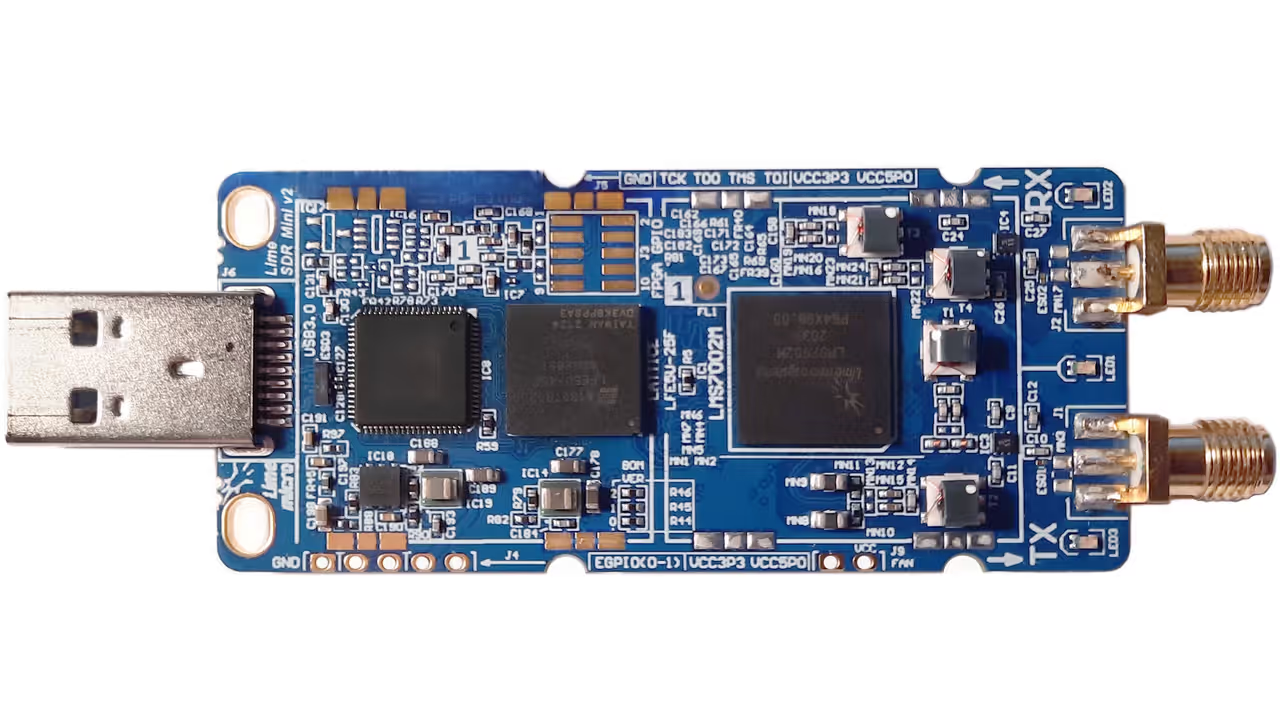
Applications
The SDR community has has used Lime products for a wide range of applications, such as:
- Amateur digital TV broadcast
- Satellite ground station
- Streaming FM to the Internet
- OreSat, Oregon's first satellite
- Spectrum-scanning jammer and controller for drones
- Bit pattern generator aligned with the SDR data stream
- Digital audio broadcast
Since LimeSDR Mini 2.0 has an FPGA with even more logic gates than its predecessors, we expect the number and types of applications to increase accordingly.
Specifications
- Lime Microsystems LMS7002M
- Frequency Range: 10 MHz - 3.5 GHz
- RF Bandwidth: 40 MHz
- Sample Depth: 12 bits
- Sample Rate: 30.72 MSPS
- TX Channels: 1
- RX Channels: 1
- Duplex: Full
- Transmit Power: max 10 dBm (depending on freq.)
- Lattice ECP5 LFE5U-45F
- 285-pin csfBGA package
- 44K LUTs logic capacity
- 108 sysMEM Blocks (18 Kb)
- 1944 Kb Embedded Memory
- 351 Kb distributed RAM
- 72x 18x18-bit multipliers
- 4x PLL and 4x DLL
- 118x IO
- FPGA configuration via JTAG
- 128Mb Flash memory for FPGA configuration
- 40.00MHz on board VCTCXO
- VCTCXO can be tuned by onboard DAC
- Reference clock input and output connectors (U.FL)
- 3x Dual colour (RG) LEDs
- 8x + 2x FPGA GPIO pin headers (3.3V) (optional)
- FTDI FT601
- LM75
- USB 3.0 (type A) plug
- Coaxial RF (SMA female) connectors
- FPGA GPIO headers (unpopulated)
- FPGA JTAG connector (unpopulated)
- FAN (5V default or 3.3V) connector
- 69mm x 31.4mm
- USB connector (5V)

